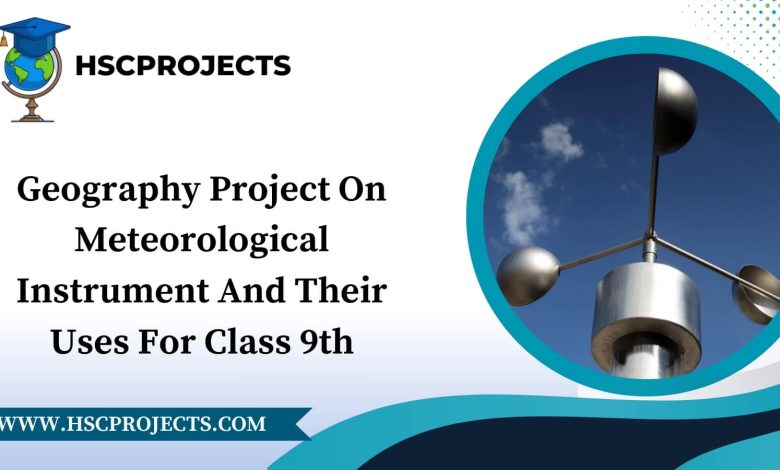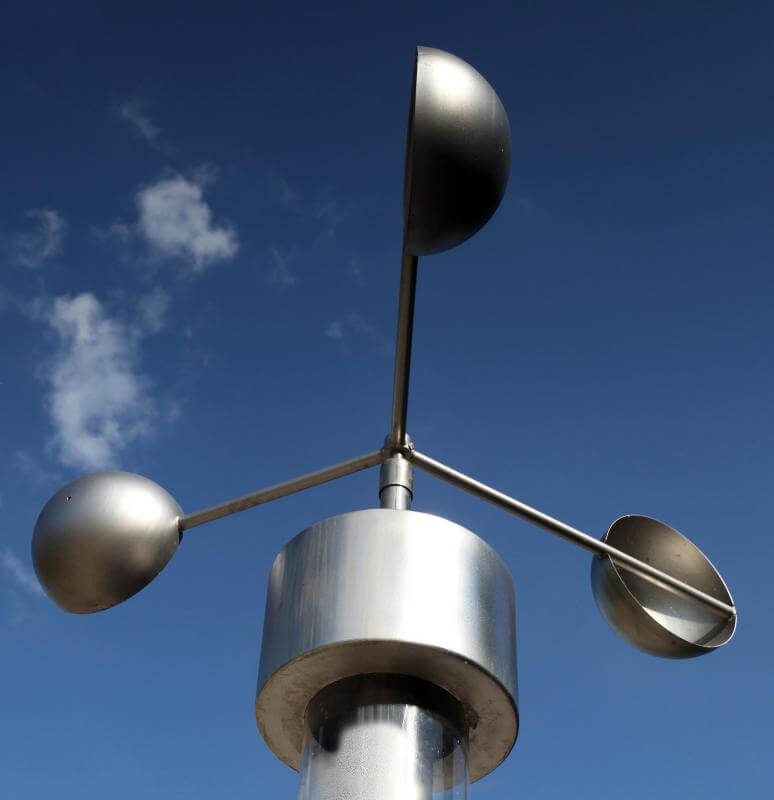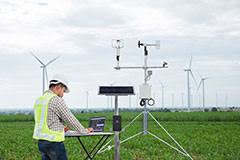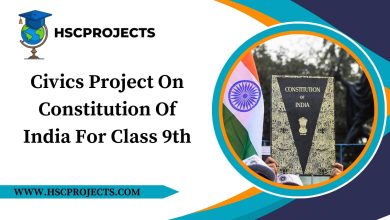
Geography Project On Meteorological Instruments and Their Uses For Class 9th
Acknowledgment
Embarking on the exploration of meteorological instruments and their intricate roles in unraveling the mysteries of Earth’s atmosphere has been a rewarding journey, made possible through the collective efforts and support of numerous individuals and institutions.
First and foremost, we extend our sincere gratitude to the National Weather Service for providing valuable insights and resources that formed the foundation of our understanding of weather instruments. Their commitment to advancing meteorological knowledge has been an invaluable guide throughout this project.
We also express our appreciation to the World Meteorological Organization for their comprehensive “Guide to Meteorological Instruments and Methods of Observation.” This authoritative resource has served as a compass, steering us through the complexities of meteorological studies and instrumentation.
Our heartfelt thanks go to the educators and mentors who have tirelessly imparted their knowledge, nurturing our curiosity and fostering a deeper appreciation for the intricate world of meteorology. Your guidance has been instrumental in shaping the content and direction of this project.
To our fellow researchers and scientists in the field of meteorology, thank you for your unwavering dedication to advancing our understanding of the Earth’s climate. Your contributions inspire us to delve deeper into the realms of atmospheric science.
Last but not least, we extend our gratitude to the Class 9 students who are the ultimate beneficiaries of this project. It is our hope that this endeavor enhances your appreciation for meteorological instruments and kindles a passion for exploring the wonders of Earth’s weather and climate.
This project stands as a collaborative effort, and we are sincerely thankful to everyone who has played a role, directly or indirectly, in its realization.
Thank you.
[Your Name]Introduction
Welcome to the fascinating realm of meteorology, where the science of the Earth’s atmosphere, weather, and climate unfolds. In this enlightening project, we embark on a journey into the heart of meteorological instruments—sophisticated tools that serve as gateways to understanding the dynamic forces shaping our atmospheric environment.
Meteorology, as the scientific study of weather and climate, relies heavily on the meticulous observation and measurement of various atmospheric elements. Meteorological instruments stand at the forefront of this endeavor, offering us a lens through which we can decode the language of the skies. From temperature fluctuations to wind patterns, humidity levels, and solar radiation, these instruments are the silent observers that enable meteorologists to unravel the complexities of our ever-changing weather systems.
Our primary objective in this project is to provide Class 9 students with a comprehensive exploration of essential meteorological instruments, unraveling their functions and significance in the broader context of weather forecasting and climate studies. By delving into the characteristics and applications of instruments such as thermometers, barometers, hygrometers, anemometers, rain gauges, weather vanes, and pyranometers, we aim to foster a deeper appreciation for the intricate interplay of elements that govern our atmospheric conditions.
As we navigate through this project, guided by the wealth of knowledge from reputable sources such as the National Weather Service and the World Meteorological Organization, we invite you to join us on this illuminating journey. Together, let’s uncover the secrets held within the instruments that bridge the gap between the visible and the unseen in the captivating world of meteorology.
Fasten your seatbelts and get ready to explore the fascinating universe of meteorological instruments—a journey that promises to open new vistas in our understanding of the Earth’s atmospheric tapestry.

Objective
Our primary mission in this project is to acquaint Class 9 students with fundamental meteorological instruments, elucidating their purposes, and shedding light on their integral role in unraveling the complexities of weather patterns.
Contents
- Thermometer:
- Definition: A thermometer serves as the sentinel of temperature measurement.
- Type: Mercury thermometer, digital thermometer, infrared thermometer.
- Uses: Essential for gauging the temperature of air, water, or soil, thereby aiding in the comprehension of daily and seasonal temperature fluctuations.
- Barometer:
- Definition: A barometer, the guardian of atmospheric pressure measurement.
- Type: Mercury barometer, aneroid barometer.
- Uses: Aids in forecasting weather alterations – high pressure signaling fair weather and low pressure hinting at impending storms.
- Hygrometer:
- Definition: A hygrometer, the custodian of humidity or moisture content measurement.
- Type: Hair hygrometer, electronic hygrometer.
- Uses: Crucial for discerning humidity levels, impacting weather patterns and influencing human comfort.
- Anemometer:
- Definition: An anemometer, the arbiter of wind speed measurement.
- Type: Cup anemometer, vane anemometer, sonic anemometer.
- Uses: Vital for assessing wind patterns, influencing weather, climate, and pivotal in activities like aviation and agriculture.
- Rain Gauge:
- Definition: A rain gauge, the sentinel of precipitation measurement.
- Type: Standard rain gauge, tipping bucket rain gauge.
- Uses: Essential for recording rainfall, a critical metric for water resource management and flood prediction.
- Weather Vane:
- Definition: A weather vane, or wind vane, unveiling wind direction.
- Type: Traditional arrow-style, modern graphic designs.
- Uses: Crucial for determining wind direction, an essential aspect in understanding weather patterns and predicting storms.
- Pyranometer:
- Definition: A pyranometer, the recorder of solar radiation.
- Type: Thermopile pyranometer, photodiode pyranometer.
- Uses: Vital for comprehending the energy balance in the atmosphere, influencing weather and climate dynamics.
Unveiling the Secrets of Meteorological Instruments
In the vast expanse of meteorology, where the skies hold the key to unraveling the Earth’s atmospheric intricacies, our project endeavors to shed light on the unsung heroes—meteorological instruments. These instruments, ranging from the time-tested mercury thermometer to cutting-edge pyranometers, play an indispensable role in deciphering the language of weather and climate.

Diving Deeper
Our exploration commences with an in-depth analysis of each meteorological instrument, exploring their definitions, types, and unique functionalities. The thermometer, a stalwart in temperature measurement, comes in various forms, including the traditional mercury thermometer and the modern digital or infrared counterparts. Each type caters to specific needs, whether gauging air temperature, monitoring water conditions, or understanding soil variations.
Moving on, we unravel the mysteries behind barometers—the guardians of atmospheric pressure. The mercury barometer and aneroid barometer stand as sentinels, helping us predict weather changes by interpreting pressure fluctuations. Hygrometers, electronic or hair-based, then take center stage, providing insights into the often-overlooked world of humidity levels and their impact on weather patterns and human comfort.
Wind Whispers
Anemometers, equipped with cups, vanes, or advanced sonic technology, emerge as the authority in measuring wind speed. Their crucial role extends beyond weather prediction, influencing activities like aviation and agriculture, where understanding wind patterns is paramount.
Precipitation and Beyond
Rain gauges, in standard or tipping bucket form, take on the responsibility of quantifying precipitation—an essential metric for water resource management and predicting potential floods. Simultaneously, weather vanes, both traditional and modern, unveil the direction from which the wind blows, providing vital information for weather pattern comprehension and storm prediction.
Harnessing Solar Insights
The project also turns its gaze skyward to pyranometers, instruments that quantify solar radiation. By measuring the energy balance in the atmosphere, pyranometers contribute significantly to understanding weather and climate dynamics.
Conclusion
As we bring our exploration of meteorological instruments to a close, we find ourselves standing at the crossroads of science and nature, where the intricate dance of atmospheric elements unfolds. Through the lens of thermometers, barometers, hygrometers, anemometers, rain gauges, weather vanes, and pyranometers, we have delved into the heartbeat of meteorology, unraveling the secrets embedded in the very fabric of our Earth’s weather and climate.
- Empowering Understanding: These instruments, each with its unique purpose and functionality, serve as our silent companions in the pursuit of understanding. From the subtle variations in temperature to the dynamic shifts in wind patterns, they empower meteorologists, researchers, and enthusiasts alike to grasp the nuances that govern our atmospheric symphony.
- Beyond Measurements: Our journey has not merely been about numbers and measurements; it has been about deciphering the stories told by the Earth’s atmosphere. Barometers forewarn of impending storms, hygrometers unveil the subtleties of humidity, and anemometers paint a vivid picture of wind patterns that shape our weather and influence our daily lives.
- A Symphony of Collaboration: This project has been a collaborative effort, drawing upon the wealth of knowledge generously provided by esteemed sources like the National Weather Service and the World Meteorological Organization. Their guidance has been instrumental in steering our exploration and ensuring the accuracy and depth of our insights.
- Igniting Curiosity: Our hope is that this journey has not only imparted knowledge but also kindled a spark of curiosity about the marvels of meteorology. From the classrooms of Class 9 students to the wider community of learners, we invite all to continue this exploration, to question, and to marvel at the wonders of the meteorological instruments that bridge the visible and the unseen.
- A Continued Voyage: As we conclude this project, we recognize that our exploration is but a waypoint in an ongoing journey. The world of meteorology is ever-evolving, and the instruments we’ve encountered are the tools that propel us forward, unlocking new chapters in the captivating story of our atmosphere.
In the symphony of meteorological instruments, let us remain attentive listeners, eager learners, and stewards of the knowledge that allows us to navigate the ever-changing skies with understanding and appreciation.
Bibliography
- National Center for Atmospheric Research. (n.d.). “Introduction to Meteorological Instruments.”
- American Meteorological Society. (2021). “Meteorological Instrumentation.”
- UK Met Office. (n.d.). “Weather and Climate Instruments.”
- European Centre for Medium-Range Weather Forecasts (ECMWF). (n.d.). “Meteorological Instrumentation.”
- NASA Earth Observing System Data and Information System (EOSDIS). (n.d.). “Introduction to Atmospheric Instruments.”
- Royal Meteorological Society. (n.d.). “Instruments and Observing Methods.”
Certificate of Completion
[Student’s Name][Class/Grade Level]This is to certify that I, [Student’s Name], a [Class/Grade Level] student, have successfully completed the “Geography Project On Meteorological Instrument And Their Uses For Class 9th” The project explores the fundamental principles and key aspects of the chosen topic, providing a comprehensive understanding of its significance and implications.
In this project, I delved into in-depth research and analysis, investigating various facets and relevant theories related to the chosen topic. I demonstrated dedication, diligence, and a high level of sincerity throughout the project’s completion.
Key Achievements:
Thoroughly researched and analyzed Geography Project On Meteorological Instrument And Their Uses For Class 9th.
Examined the historical background and evolution of the subject matter.
Explored the contributions of notable figures in the field.
Investigated the key theories and principles associated with the topic.
Discussed practical applications and real-world implications.
Considered critical viewpoints and alternative theories, fostering a well-rounded understanding.
This project has significantly enhanced my knowledge and critical thinking skills in the chosen field of study. It reflects my commitment to academic excellence and the pursuit of knowledge.
Date: [Date of Completion]Signature: [Your Signature] [School/Institution Name][Teacher’s/Examiner’s Name and Signature]
In order to download the PDF, You must follow on Youtube. Once done, Click on Submit
Follow On YoutubeSubscribed? Click on Confirm
Download Geography Project On Meteorological Instruments and Their Uses For Class 9th PDF






